The Ministry of Defence have signed a £183 million contract for a five inch gun system the Royal Navy’s new Type 26 Frigate fleet.
The Maritime Indirect Fire System (MIFS) will be integrated onto the Type 26 Global Combat Ships, currently being designed by BAE Systems. MIFS includes the 5-inch, 62-calibre Mark 45 Naval Gun System, which is already in service with other NATO nations, including the US and Spanish navies.
The gun mount features an automatic loader with a capacity of 20 rounds. These can be fired under full automatic control, taking a little over a minute to exhaust those rounds at maximum fire rate. For sustained use, the gun mount would be occupied by a six-man crew (gun captain, panel operator, and four ammunition loaders) below deck to keep the gun continuously supplied with ammunition.
Minister for Defence Procurement Harriett Baldwin said:
“Our growing defence budget means we can invest in a cutting edge weapon system for the Royal Navy’s next generation Global Combat Ship at the best value for taxpayers. Along with sustaining highly skilled jobs across the country, this new contract underlines our commitment and demonstrates continued momentum in the programme.”
The new contract covers the design and manufacture of the first three guns for the first three ships in the class, as well as a training system and ammunition, and will sustain 43 skilled UK jobs.
BAE Systems, Weapon Systems and Munitions, based in the US, will lead on the work to bring the weapons system into service, with subcontractor work being undertaken by:
- BAE Maritime Services Frimley & Broad Oak to develop, supply and integrate MIFS gunfire control;
- BAE Munitions Glascoed, which is carrying out the UK ammunition qualification and;
- BAE Weapons Systems Barrow, which is supporting the UK equipment safety cases.
Deliveries of the gun to the UK are expected to begin in 2020.
Joe Senftle, Vice President and General Manager of Weapon Systems at BAE Systems, said:
“Our teams in the US and UK will bring unrivalled skills and expertise to the MIFS development and production. The world-leading Mk 45 will provide the Royal Navy with a proven, reliable, and highly-effective system that is adaptable to firing a wide range of today’s ammunition, as well as future, precision-guided munitions currently in development.”
The Mk 45 is in service with the US Navy and 10 other allied nations. More than 240 Mk 45 guns have been delivered into service globally.
Despite alarming headlines, the Type 26 frigates have not been cancelled or “indefinitely postponed”, work is continuing at all levels of the programme.
Manufacturing of the Type 26s was initially expected to start in 2016, confirmation of when the work will begin has still to be announced but we’re told that it’s anticipated that the steel will be cut for the first Type 26 in Q4 of 2017.
Unions have also insisted that there will be no redundancies as a result of uncertainty over the Type 26 build timetable on the Clyde.
Duncan McPhee from Unite said the contract was still guaranteed.
“There is guarantees. The main issue is the timetable, which is causing us the real problems and that has to be sorted out as soon as possible.”
Mr McPhee also added that BAE bosses were in negotiations with officials at the MoD to resolve the timetable issues:
“It means for jobs that we have the workforce geared up for this programme and that workforce will remain. It means that we are going to have to do a lot of things between the company and moving different work packages about, keeping people at Rosyth maybe for longer working on the aircraft carriers, maybe having to transfer people down to Barrow for the submarine programme so we will keep the jobs.”
A MoD spokesperson said:
“The Government is committed to building ships on the Clyde and to the Type 26 programme. over the next decade, we will spend around £8 billion on Royal Navy warship.
As set out in the Strategic Defence and Security Review, we will build two new offshore patrol vessels on the Clyde, maintaining Scottish shipbuilding capability ahead of the start of the Type 26 build.
We will also consult with industry and trade unions as part of the national shipbuilding strategy, which will set the UK shipbuilding industry on a sustainable footing for the future.”
The SNP and others had said that any reduction in the number of Type 26 frigates being built on the Clyde would be a “betrayal” of the workforce.
The original plan for the class had been 8 anti-submarine warfare variants and five general purpose variants, this remains largely unchanged except for the specification of the later five vessels, which has been reduced to make them more affordable.
The later five are now designated the Type 31 frigate.
The Prime Minister has confirmed that all new frigates and additional vessels mentioned in the defence review will be built in Scotland.


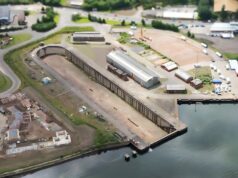
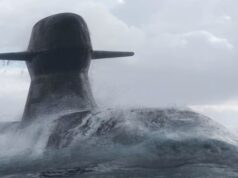


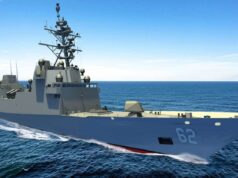
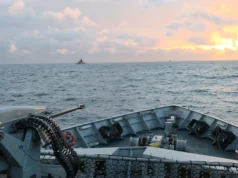

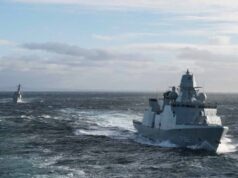
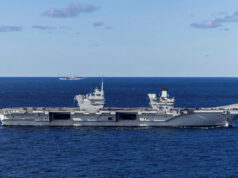
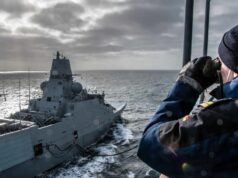

strange buying the gun before the hull,ships are like houses built from the founds up,seems the mod are working from the top down…bit confusing
Not really. It’s a very expensive component of the ships so locking in pricing once it is absolutely certain an expensive component is the one that is specified in the design makes sense to avoid the chances of inflationary increases before the order is placed. The contract also has options for an additional 5 guns for the remaining T-26 and might lock in that pricing in some way as well, possibly with some sort of provision for defined inflationary increases. Also, once contracts are signed money can be allocated against it and currency hedging done if deemed necessary. This article quotes the pricing in pounds but I believe the contract is actually prices in US Dollars so hedging might be an issue with all the Brexit-related currency fluctuations.
Sadly the price is $245 milion for 3!
“The new contract covers the design and manufacture of the first three guns for the first three ships in the class,”
As far as we know, they are in service with 11 nations and the price is for reconditioned units so why are we paying so much for design? At £61 million each mount, this sounds extortionate and one can see why they end up with figures approaching £1.3 bn for the full ship.
lets face it, the 31 will be a ‘stripped down’ t26
People who comment on these stories have little idea about how procurement works ! You can buy any ancillaries before the ship is built and have them fitted when ready. This is more good news fro the UK/BAE systems Worldwide. I think the MOD have learn’t their lessons now about failed projects in the past and are now stepping up to the ‘front line’ capability club !
in the country however the people hired to do the job have no idea of what is needed and why
The gun is the Mk45 and comes in two calibers, 54 and 62, and is currently manufactured by BAE Systems. An automatic loader allows the gun to operate with no crew but the loader is limited to 20 rounds. A crew of six are required to operate the gun on a sustained basis. Navweaps website lists the rate of fire as 16 rounds per minute in sustained operation. It also gives the effective firing range as 15 miles (54 cal) or 23 miles (62 cal).
The common projectile is an HE round with various fuzing options and a burst charge of 7.7 lbs.
The Extended Range Guided Munition (ERGM) would have extended the range to 60 miles but was cancelled in 2008 after a protracted and troubled development.
Now that we know everything there is to know about the Mk45 5” gun, what roles does it perform?
The gun has an anti-ship capability although 5” guns are not considered capable of sinking a vessel of any size. Further, the gun is not considered effective as an anti-small boat (anti-swarm) weapon due to the slow rate of fire.
The gun is not considered effective in the AAW role.
The gun is somewhat useful in a shore gun support role against small or lightly protected targets. It is not considered to be particularly effective as an area bombardment weapon and is not effective against bunkers, fortifications or other hardened targets.
In response to the United Defense proposal, in December 2004 BAE Systems made a proposal to use the existing gun house for the 4.5″ (114 mm) Mark 8 Mod 1, but use the same 155 mm/39 gun barrel being used on the Army’s AS90 Braveheart self-propelled howitzer. BAE called this proposal the 155 mm TMF (Third generation Maritime Fire support). BAE claims that this arrangement would not create recoil forces beyond the capability of the Mod 1 mounting and estimates that this design would weigh 24.5 tons compared with 22.5 tons for the 4.5″ (114 mm) Mark 8 Mod 1 and 26.4 tons for the original Mod 0. BAE foresees that the largest modification would be changing to a double-stroke loading cycle needed to handle modular charges. BAE estimates that this change would reduce the rate of fire to about 12 rounds per minute. There would also need to be a modification of the gun shield to allow for higher elevation angles.
BAE states that the Mark 8 Mod 1 gunhouse could also be used for a Fourth generation Maritime Fire support weapon (FMF) using the longer-barrel 155 mm/52, but this combination would require strengthening of the gunhouse in order to meet the added recoil forces.
MOD awarded BAE a research contract in 2007 to pursue their TMF design. However, the project was cancelled in late 2010 as part of large UK budget cuts in defense and other areas.
How much?!!I know, I know training, ammunition spares etc. But 60million each is a hell of a lot of money. It’s beginning to dawn on me why the type 22 had no gun. Bae has it’s sticky fingers all over it ofcouse. I and many others are becoming suspicious that we are paying much more than other countries for American kit. Of course they make it very difficult to compare like with like so it’s going to be very difficult to find out for sure. Maybe it’s the right time to order the guns, but I’m sure Bae cash flow has something to do with it.
Is this gun any better than those on the T23 & T45?
[…] Original post @ukdefencejournal.org.uk […]
Harriett Baldwin: “Our growing defence budget ….”
That is a huge lie. Defence spending is decreasing and has been for some time and our armed forces are at all time lows in men and material. They will get even smaller.
By the way, your gun information is laughably inaccurate. The Type 26 will be fitted with an automatic magazine and therefore doesn’t require any crew, let alone 6.
You have to reload it in the end,in this case after 20 shells it needs manually reloading. Have just read that not only are they $80million each but they are not even new, they are reconditioned units.
procurement is a mess and we all know it, techno snobbery, of all the u.k forces, we want this system, that radar e.t.c have boosted the cost of capital items such as ships, through the roof resulting ind in order reductions and cancellations.as for the f 35 programme? i’d put them against a wall and shoot the bloody lot of the incompetent penny pinching nobodys
Was this not the gun system that the Royal Navy rejected back in 2005 as being too expensive? BAE had TMF and FGF with the longer gun, but was cancelled due to Government cut backs in 2010.
BAE loves the R.N. THEY’VE GOT IT SEWN UP nicely no competition, plenty of orders